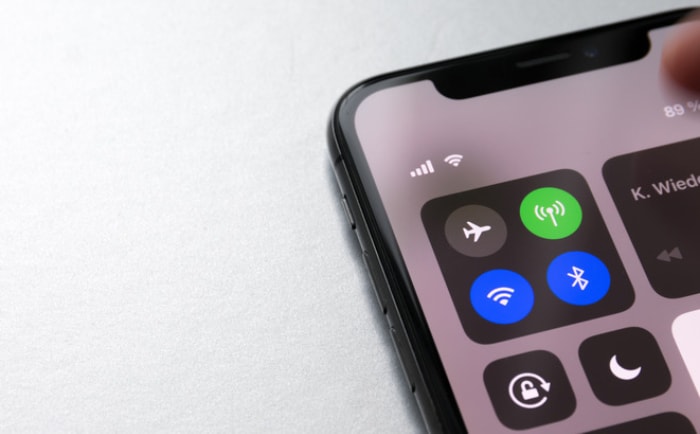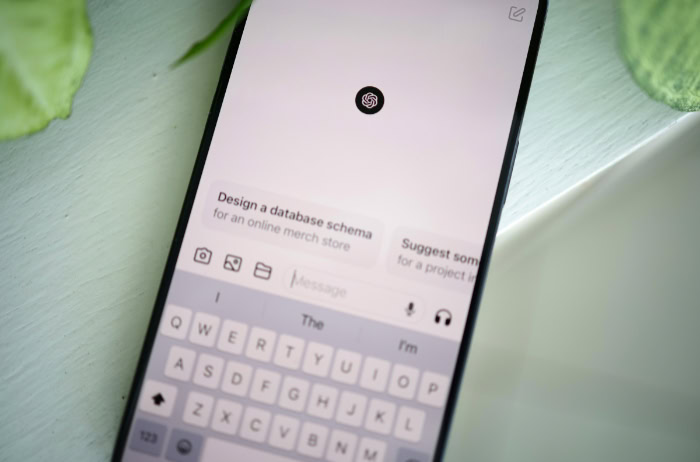HEIF vs. JPEG: Breaking Down Image Quality and File Size

Modern image formats play a crucial role in how we capture and share memories, with HEIF and JPEG standing out as two of the most prominent options. JPEG has long been the dependable choice for its widespread compatibility, while HEIF, a relatively newer format, is quickly gaining attention for its ability to deliver superior image quality in smaller files.
With advancements in photography and technology, deciding between these two formats requires more than just a glance at file extensions.
Compression Efficiency And File Size
Choosing the right image format often comes down to balancing quality and file size. Compression efficiency plays a crucial role in determining how much storage your images will occupy and how well they retain their visual appeal.
JPEG, the longstanding choice for digital photography, employs traditional compression techniques, while HEIF introduces cutting-edge technology to improve efficiency, making each format distinct in its approach to reducing file sizes.
HEIF's Advanced Compression
HEIF, or High Efficiency Image Format, utilizes the HEVC (High Efficiency Video Coding) algorithm, also known as H.265, to optimize file compression. This advanced method significantly reduces the size of image files while preserving intricate details and high-quality visuals.
By processing data in smaller blocks and leveraging sophisticated predictive techniques, HEIF ensures that the images maintain sharpness, clarity, and vibrant color accuracy even at reduced file sizes. This modern compression process makes HEIF a remarkable choice for smartphones and devices where storage capacity is often limited.
Users benefit from retaining more photos without sacrificing resolution, making it an attractive option for photographers and casual users alike.
JPEG's Traditional Compression
JPEG (Joint Photographic Experts Group), on the other hand, relies on an older compression algorithm based on discrete cosine transform (DCT). While incredibly reliable and widely used, this method is less efficient compared to HEIF, often resulting in larger file sizes for images with comparable quality.
Compression in JPEG can introduce artifacts such as blocky distortions or loss of fine details when images are compressed to smaller sizes. Despite its drawbacks at higher compression levels, JPEG remains a staple for static images thanks to its simplicity and universality across software, devices, and platforms.
Practical Implications
The advantages of HEIF's advanced compression are particularly noticeable for users storing large volumes of high-quality images on devices with limited memory capacity. Leveraging its file size efficiency, HEIF allows modern smartphones and cameras to store more photos without running out of space.
However, JPEG’s larger files might be less desirable for such scenarios, especially when storage optimization is a priority.
For users who value efficiency and superior compression quality, HEIF provides a forward-thinking solution that aligns well with today’s space-saving needs. JPEG, while slightly dated in compression technology, remains trusted for its simplicity and universal support.
Ultimately, the decision between these formats hinges largely on personal priorities regarding file size and storage constraints.
Image Quality And Color Depth

The quality of an image is often the first factor people consider when selecting a format, especially for photography and visual media. Color depth, compression type, and visual impact significantly influence how an image looks and how much detail it retains.
HEIF and JPEG differ substantially in how they handle these elements, with HEIF offering modern advantages for users looking to maximize quality and retain fine details.
Color Depth Comparison
HEIF stands out for its ability to support up to 16-bit color depth, while JPEG is restricted to 8-bit. This difference has a profound effect on how colors are represented within an image.
With HEIF’s expanded color range, richer hues, smoother gradients, and subtle variations in tone become more pronounced, making it ideal for capturing intricate details in natural scenes or high-dynamic-range (HDR) photography. By contrast, JPEG’s 8-bit color depth, though sufficient for everyday use, is limited in its ability to represent shades and gradients accurately, sometimes resulting in banding where colors transition.
The advantage of a higher bit depth also means HEIF is better equipped for devices and workflows that utilize HDR capabilities. This can provide a broader dynamic range and enhanced realism in images, delivering a viewing experience that feels more lifelike compared to the flatter tones of JPEG.
Lossless Vs. Lossy Compression
HEIF offers users the flexibility of both lossless and lossy compression, which adds a layer of versatility when deciding how an image should be saved and shared. Lossless compression ensures that there is no degradation in quality, preserving every detail of the original file.
This option is highly valuable for professional photography and situations where retaining the highest image fidelity is essential. At the same time, HEIF’s lossy compression manages to maintain excellent quality while achieving smaller file sizes, thanks to its advanced algorithms.
JPEG, on the other hand, exclusively employs lossy compression. While its approach has been reliable and widely accepted for decades, lossy compression in JPEG can result in a noticeable loss of detail, particularly when images are saved or edited repeatedly.
This limitation makes it less versatile for workflows that demand high-quality preservation.
Visual Impact
The visual differences between HEIF and JPEG are particularly noticeable in scenes with complex lighting, gradients, or high contrast. HEIF enhances tonal gradation, delivering smoother transitions between shadows, midtones, and highlights.
Images saved in HEIF often appear more vibrant and true to life because of its ability to handle subtle variations in color and detail.
JPEG, while capable of producing clear and colorful images under most circumstances, may struggle with more dynamic or richly detailed scenes. Compression artifacts, banding in gradients, and muted tones can sometimes diminish the overall aesthetic, particularly when compared side by side with HEIF.
For users aiming to achieve professional-quality visuals or take full advantage of modern HDR displays, HEIF’s potential makes it a standout option. Meanwhile, JPEG retains its place as a reliable choice for everyday photography where maximum quality may not be the primary concern.
Compatibility And Adoption

For years, compatibility has been a defining factor in the widespread adoption of image formats. JPEG has long been entrenched as the standard for digital imaging, ensuring seamless operation across nearly all devices, platforms, and applications.
HEIF, with its advanced features and advantages, faces a very different landscape, having to overcome challenges related to its newer technology.
Device And Software Support
JPEG enjoys universal compatibility, making it the go-to format for nearly every device, software, and operating system. From older computers to modern smartphones, JPEG files open and display effortlessly without requiring additional codecs or conversions.
This level of support ensures that images saved in JPEG can be shared widely without the risk of compatibility issues, making it the ideal choice for users who prioritize ease of access across diverse environments.
HEIF, despite its technical superiority, does not yet match the same level of adoption. While most newer smartphones, cameras, and operating systems have begun to support HEIF files natively, older devices and software often fail to recognize the format.
This lack of backward compatibility creates barriers for individuals working with legacy systems or collaborating with others who may not have devices that support HEIF. In such cases, users often have to rely on automatic file conversions or alternative formats to ensure compatibility, which can complicate workflows.
Challenges In Workflow
Transferring HEIF files across platforms that lack proper support can introduce frustration, as the files may either fail to open or require conversion to JPEG or another widely recognized format. Many modern operating systems, such as iOS and macOS, include built-in tools to handle this challenge by converting HEIF images into JPEG when shared with older devices.
However, this process can sometimes lead to a slight loss of quality during conversion or add unnecessary steps when managing large volumes of files.
For professionals who rely on streamlined workflows, the need to convert HEIF files can create inefficiencies, particularly when dealing with clients or partners who rely on older systems. JPEG, on the other hand, avoids such hurdles entirely due to its universal support, allowing for more predictable results in collaborative environments.
Emerging Adoption
HEIF is steadily gaining traction as modern devices, platforms, and software embrace its advantages. Many smartphone manufacturers and camera makers are adopting HEIF as the default format for saving images, citing its superior image quality and storage efficiency.
As more companies implement support for HEIF in their ecosystems, users are finding it easier to work with the format without encountering as many compatibility issues.
The continued growth of HEIF adoption reflects a shift toward formats that maximize efficiency and quality, signaling a departure from older standards like JPEG. While it may still take additional time for HEIF to achieve the same level of ubiquity as JPEG, its integration into modern systems suggests a future where compatibility is less of a concern.
For now, users must weigh the benefits of HEIF against the limitations imposed by its less extensive support network.
Advanced Features And Use Cases
The functionality offered by a file format can significantly impact how it is used in photography, design, and beyond. HEIF and JPEG differ greatly in their feature sets, with HEIF introducing modern capabilities that enhance its versatility while JPEG remains valued for its straightforward, no-frills approach.
These strengths and limitations shape their suitability for various creative and practical applications.
Additional Features In HEIF
HEIF goes beyond being a simple image format by incorporating advanced features that empower creative workflows. One of its standout capabilities is the ability to store multiple images or sequences in a single file.
This makes HEIF particularly beneficial for creating photo bursts or animations, as users can keep all frames consolidated within one compact file.
Transparency is another feature supported by HEIF, allowing users to create images with see-through backgrounds. This functionality is especially useful in design projects or professional editing where layering images plays a critical role.
Additionally, HEIF offers support for depth maps, which store information about the distance of objects in an image. Combining depth data with the image itself opens up possibilities for augmented reality, 3D effects, and other innovative applications.
Non-destructive editing is yet another advantage offered by HEIF. Changes to an image, such as cropping or adjustments to brightness and color, can be saved without permanently altering the original photo.
Users benefit from the flexibility of revisiting and modifying their edits without losing any data, a feature that aligns well with high-quality photography and professional workflows.
JPEG’s Simplicity
JPEG is designed to focus on simplicity, making it a straightforward solution for capturing and sharing static images. Its lack of advanced features is offset by its ease of use and compatibility, which allows it to deliver consistent results without the complexity associated with modern formats.
JPEG’s streamlined nature means it is ideal for photos that require minimal post-processing and for users who prioritize a format that works instantly on any device or platform.
Though it lacks transparency, depth maps, or non-destructive editing, JPEG’s simplicity remains an advantage for those seeking quick and reliable solutions for everyday image sharing. For users dealing with high volumes of photos intended for social media, email, or websites, JPEG provides a tried-and-true option that requires no extra steps or specialized software.
Best Use Cases
HEIF is perfectly suited for photographers and professionals who require high-quality images with cutting-edge functionality. Its support for transparency, depth maps, animations, and non-destructive editing makes it a natural fit for advanced editing workflows, creative projects, and scenarios where preserving detail and versatility are priorities.
Users who work frequently with HDR photos or 3D imaging tools will also find HEIF’s features invaluable.
JPEG continues to shine in scenarios where compatibility and universality are paramount. Its ability to open on virtually any device or platform ensures that web developers, content creators, and casual users can rely on it for seamless sharing and quick access.
For static images with no need for complex editing or additional layers of data, JPEG offers a practical and dependable solution.
Conclusion
HEIF and JPEG each bring distinct strengths to the world of digital imaging, but their differences highlight the importance of considering your specific needs when choosing between them. HEIF excels in compression efficiency, image quality, and advanced features, offering smaller file sizes, richer colors, and support for innovative capabilities like transparency, depth maps, and non-destructive editing.
JPEG, with its traditional compression and 8-bit color depth, remains unmatched in its universal compatibility, simplicity, and reliability across all devices and platforms.
For users prioritizing quality and storage efficiency, HEIF stands out as the preferred choice, especially for those working with high-dynamic-range photography or engaging in professional workflows involving extensive edits and creative elements. On the other hand, JPEG continues to be the ideal option for situations requiring broad accessibility, such as sharing images online or collaborating with individuals using older devices or software.
As technology advances and more devices adopt HEIF, the format is gradually becoming the modern standard for photography and digital media. While JPEG remains a staple for compatibility, HEIF’s evolution reflects a growing demand for formats that balance quality, efficiency, and functionality.
The choice ultimately depends on individual priorities, but it is clear that HEIF is paving the way for the future of image formats.


